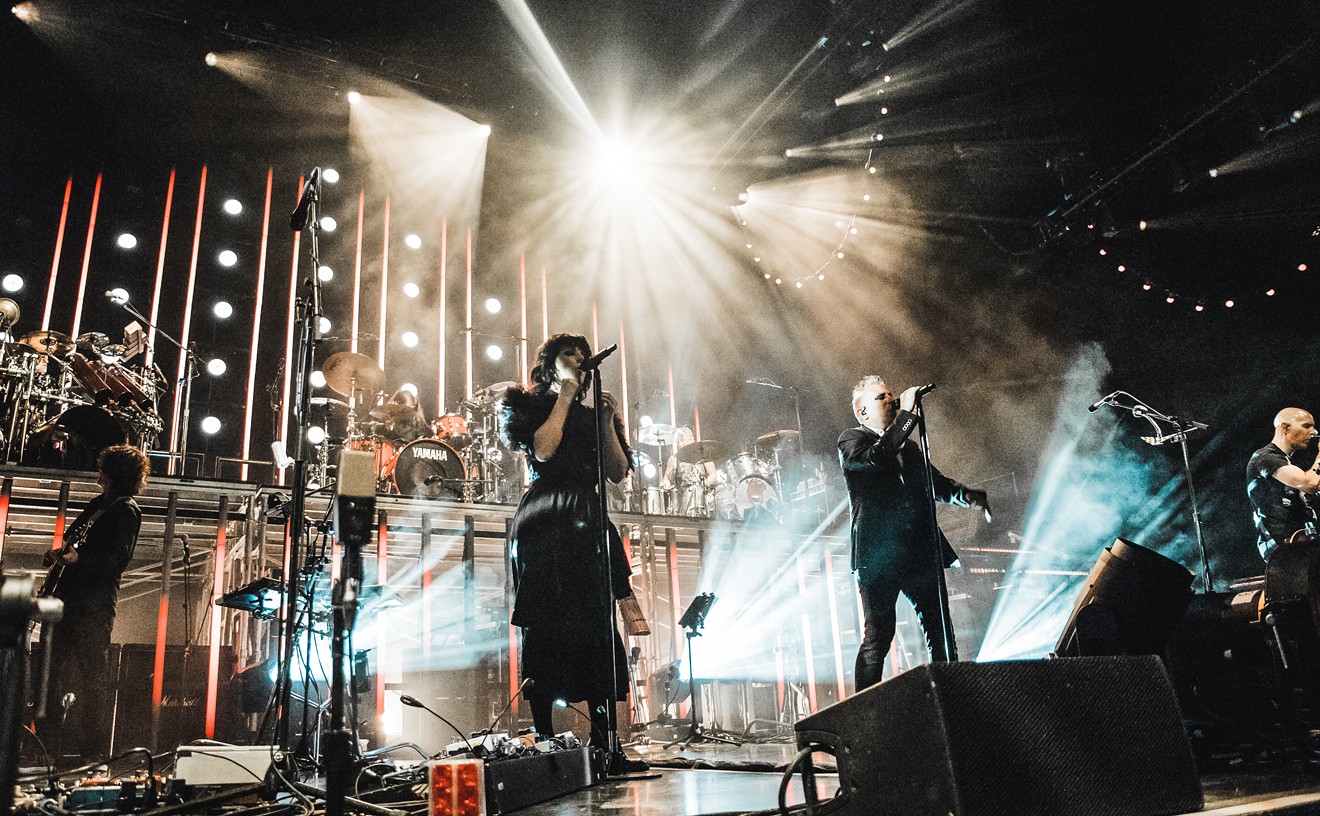Jim Jarmusch--the award-winning director of such films as Down By Law, Mystery Train, and Night On Earth--has been a longtime fan of both Young and the California bar band Crazy Horse, the group with which the Canadian-born artist seems to find his deepest resonance. When Jarmusch--who has an eye (and ear) for Americana and its implications every bit as sharp as Young's--was writing and shooting his surreal 1995 western Dead Man, he had the music of Young and Crazy Horse running through his mind and his stereo. The band even performed in Sedona, Arizona, while Jarmusch was filming there. When Young agreed to score the film, Jarmusch was ecstatic; their partnership resulted in Young commissioning Jarmusch to make some videos to accompany his music, first for the soundtrack to Dead Man and then for the song "Big Time" from his '96 release Broken Arrow.
Year of the Horse grew out of that creative partnership. A rock and roll documentary about a band making music, it is as in-depth a look into the core of a rock legend--past and present--as has ever been set to film. One of the fullest examples of the type, Horse nevertheless cannot avoid the caveat behind every band film ever made: If you love the act, insight and surprise abound; if you don't, it's just too much of what others consider a good thing.
One gets the feeling that Jarmusch doesn't really care about all that; he merely wants to put on record the magic of what is for him a mighty thing. By adopting this approach, he frees himself to get even closer to the heart of his subject: a colossally loud, riff-centered exploration of the sonic possibilities lurking within electric guitars and amplifiers, a group whose mission is so close to the essentials of rock that in its delivery is found cause common to such far-flung (and disparate) genres such as noise, No Wave, electronic primitivism, and punk.
The footage used comes from three points in Crazy Horse's history: 1976, 1986 (footage originally shot for the film Muddy Track), and 1996. Shot in grainy, blurry Super-8 and 16mm film that alternates between color and black and white, the rough, approximate shapes caught on screen match perfectly the roughly hewn music of Crazy Horse. The scenes captured--bus-bound discussions of vocal harmony, pot-smoking camaraderie, and after-show fights--show how successful Jarmusch was in insinuating himself into the life of the band. Young and bassist Billy Talbot struggle to put their experiences in the proper context, while drummer Ralph Molina serves as a matter-of-fact archivist. Guitarist Poncho Sampredo consistently mocks Jarmusch's "artsy-fartsy" presumptions in assuming that something as sprawling as Crazy Horse could ever be captured by a mere movie.
He has a point. As band members discuss the various steps in the band's evolution, they don't shy away from the painful parts: the group's beginnings as the Memories and then the Rockets, backing the talented but doomed Danny Whitten. In one scene Young 'fesses up to pretty much "stealing" Whitten's band, acknowledging responsibility while at the same time noting that Whitten--a notorious drug abuser--was no kind of option. Young tried to make amends by using Whitten for the recording of his classic Harvest album, but Whitten overdosed after Young dismissed him because of his increasingly onerous heroin habit. Bruce Berry, the Crosby, Stills, Nash, and Young roadie who likewise overdosed around the same time and is the central character in Young's signature song "Tonight's the Night," is likewise treated as an important influence, as is the death (from natural causes) of David Briggs, a guiding and reaffirming force for the band in their later years.
The film traces the players from their younger, hairier, skinnier (and in Young's case, way more spaced out) 1976 versions to the present, where they appear baggy-eyed, roadworn, and wiser. As it progresses, an impression builds: that of the thing Molina, Young, Talbot and Sampedro call "The Horse." Their scattered recollections and attempts at explanation paint a composite portrait of a powerful band, individual images overlaid and cobbled together like one of those high-altitude pictures of the moon made up of dozens of separate photos. Dimly seen through the fog of its own history, Crazy Horse sits like a mammoth lodestone, both at the edges and at the center of the lives of those who play in it. If you ever questioned that Crazy Horse was a heavy band--whether you liked the music or not--Year of the Horse will dispel your doubts.
That sense of weight, of momentum, carries through the live concert footage. Young snarls and grimaces while flailing at his guitar with a spastic, staggering energy. Crazy Horse is the art of the grind exalted, embodying the almost-autistic freedom found in rock's most basic patterns, and Jarmusch conveys that through a cycle of images--backstage, on stage, on the bus--that the director runs through again and again. Its most expressive moment comes during the song "Fucking Up," in which Young's anguished question--"why do I keep fucking up?"--leads into ever-more vaulting solos. Young's playing is possessed of a ponderous grace that is both huge and logical, like the leading edge of a huge glacier calving spectacularly into some arctic bay. As this primal stomp enters its most heated phase and Young writhes behind the notes he chops out of his guitar, you can see Billy Talbot assaulting his bass in the background. His face is contorted like some tribal war mask, his eyes blazing, both agonized and angry as he contemplates--and makes audible--the anger, revulsion, and self-awareness behind one of man's oldest questions. It is a rare, undeniably clear moment, and in it is the symmetry that saves Jarmusch's effort from being a run-of-the-mill rockumentary: a picture not only of how a band has affected us in the audience, but also of how it has changed the people on the other side of the footlights.
Year of the Horse.
Directed by Jim Jarmusch. Opens Friday.










